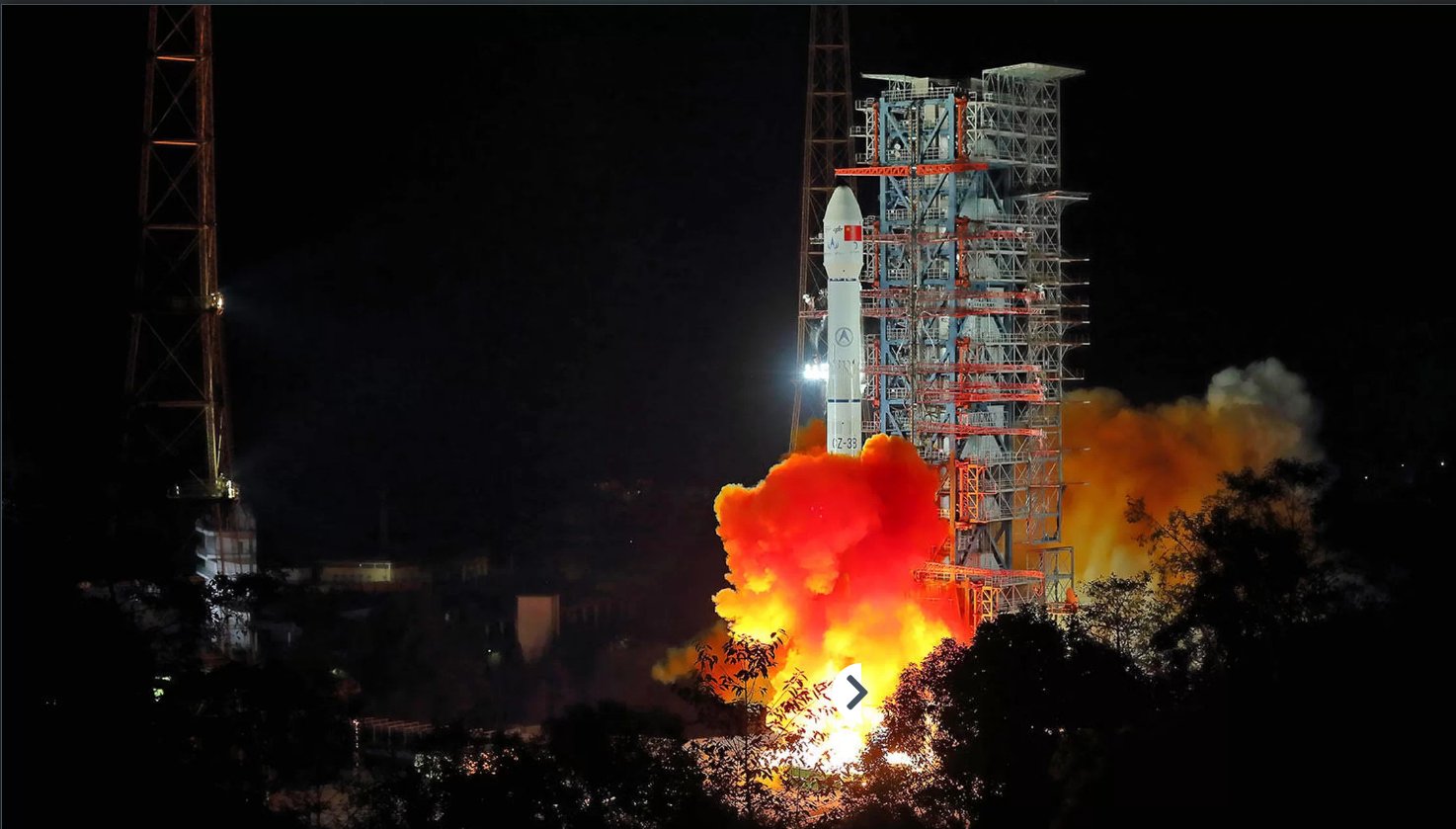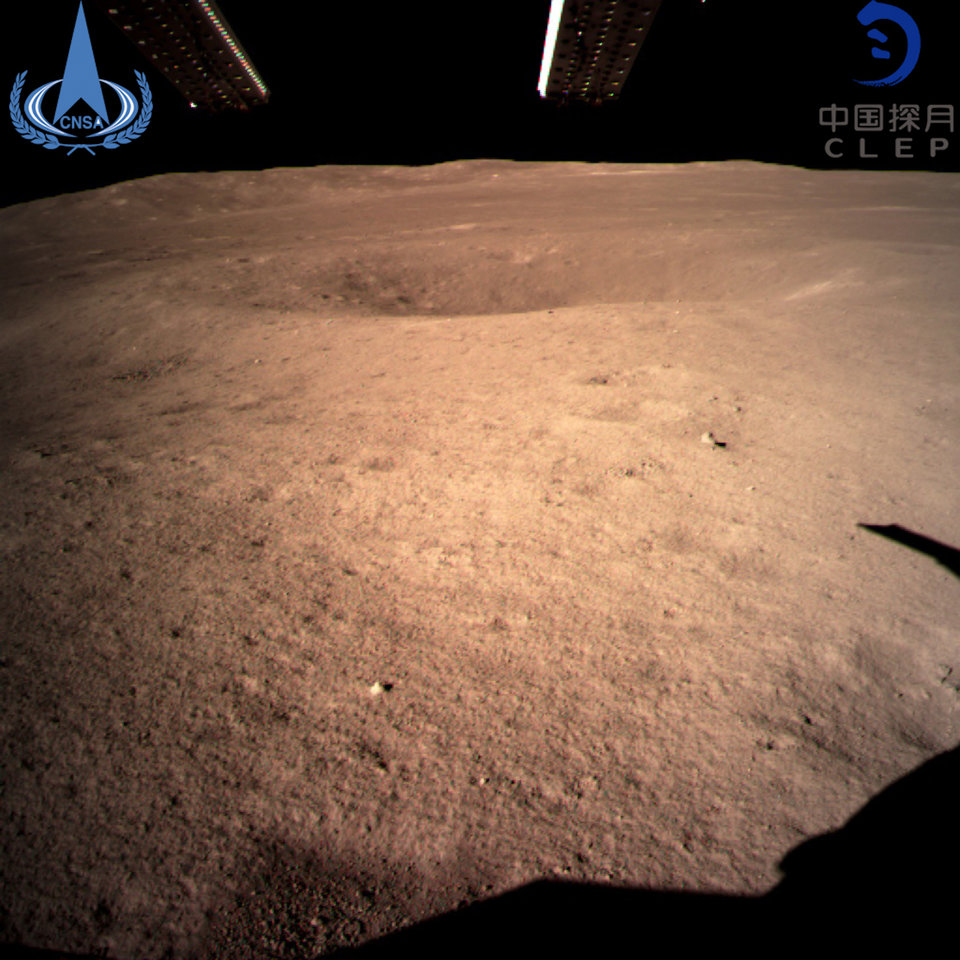Don’t call it the dark side! Just because the Moon keeps the same face towards the Earth doesn’t mean the other side is dark. In fact the side of the Moon we can’t see gets just as much sunlight as the side we can see. Still the Lunar Farside has always been a land of mystery.
We do have photographs of the farside, taken by the lunar orbiter series of space probes that made detailed images of the entire Moon’s surface in preparation for the Apollo landing, see image below. However, even during the heyday of Apollo NASA never considered landing a probe on the surface of farside let alone a manned landing. NASA’s reason for avoiding the farside is quite simple, if you go behind the Moon in order to visit the farside you’re not only out of sight, you’re out of radio contact, so an unmanned probe couldn’t get its data back to Earth anyway! Because of this the Moon’s farside remained untouched for almost 50 years after Apollo.

Now however China’s National Space Agency (CNSA) has succeeded in landing the Chang’e 4, a sophisticated robotic probe that even carries a small rover, onto the Moon’s farside. So how did the Chinese resolve the problem of communicating with the Chang’e 4 as it landed in Aitken Basin, the Moon’s largest and oldest impact crater. Well they did so by first putting a relay satellite named Queqiao into lunar orbit. In this way Chang’e 4 will remain in constant contact with its command center back on Earth. See image below.

The Chang’e 4 was launched aboard a Long March 3B carrier rocket back on December 7th and went into lunar orbit on December 12th, see image below. As is usually the case with Chinese space missions there was no public statement of exactly when the Chang’e 4 would land, the announcement came only after Chang’e 4 was safely on the ground.

But Chang’e 4 did land safety and has already begun to send back close up images from the surface of farside, see image below. Then after about a day to check out all of the lander’s systems the Chinese ordered Chang’e 4 to deploy it’s 6-wheeled rover named Yutu. See images below of the Yutu rover descending from the Chang’e 4 main lander.



In addition to experiments dealing with lunar geology and interactions of the solar wind on the lunar surface the Chang’e 4 will be carrying out some simple low frequency radio astronomy observations. You see here on Earth all of the electronic devices that are a part of modern society interfere with all of the low frequency signals coming from outer space, and more and more the high frequency ones as well. But on the farside of the Moon Chang’e 4 will be shielded from all of mankind’s artificial signals allowing it to see those from astronomical sources only. Radio astronomers hope that one day the farside of the Moon will serve as a platform for huge radio telescopes with which they can see the Universe without worrying about artificial interference.
Chang’e 4 represents another major step forward in China’s space program. Having become only the third nation to launch humans into space China is currently developing its own, small space station and is moving forward with robotic lunar and interplanetary probes. Taking a slow but steady approach as opposed to NASA’s herky jerky bursts in different directions China hopes to put a man on the Moon sometime in the mid to late 2020s, the same time frame as NASA (see my post of 31Dec2018). In that case we are in another space race back to the Moon, if a quieter one. I wonder who will win this time!
Before I go; with all of the excitement of New Horizons exploring Ultima Thule and Chang’e 4 landing on the Moon’s farside it was easy to miss the news that the Osiris-REX spacecraft has gone into orbit around the asteroid Bennu, the smallest, least massive object which a space probe has ever orbited. Now Osiris-REX will take a few months to study Bennu in order to determine a suitable landing spot from which it will obtain a sample of the asteroid for return to Earth.

